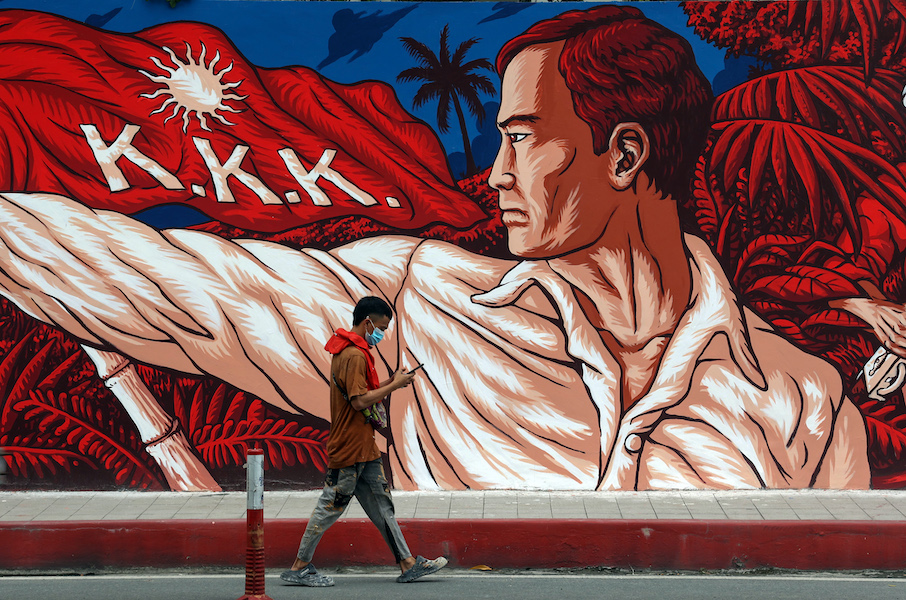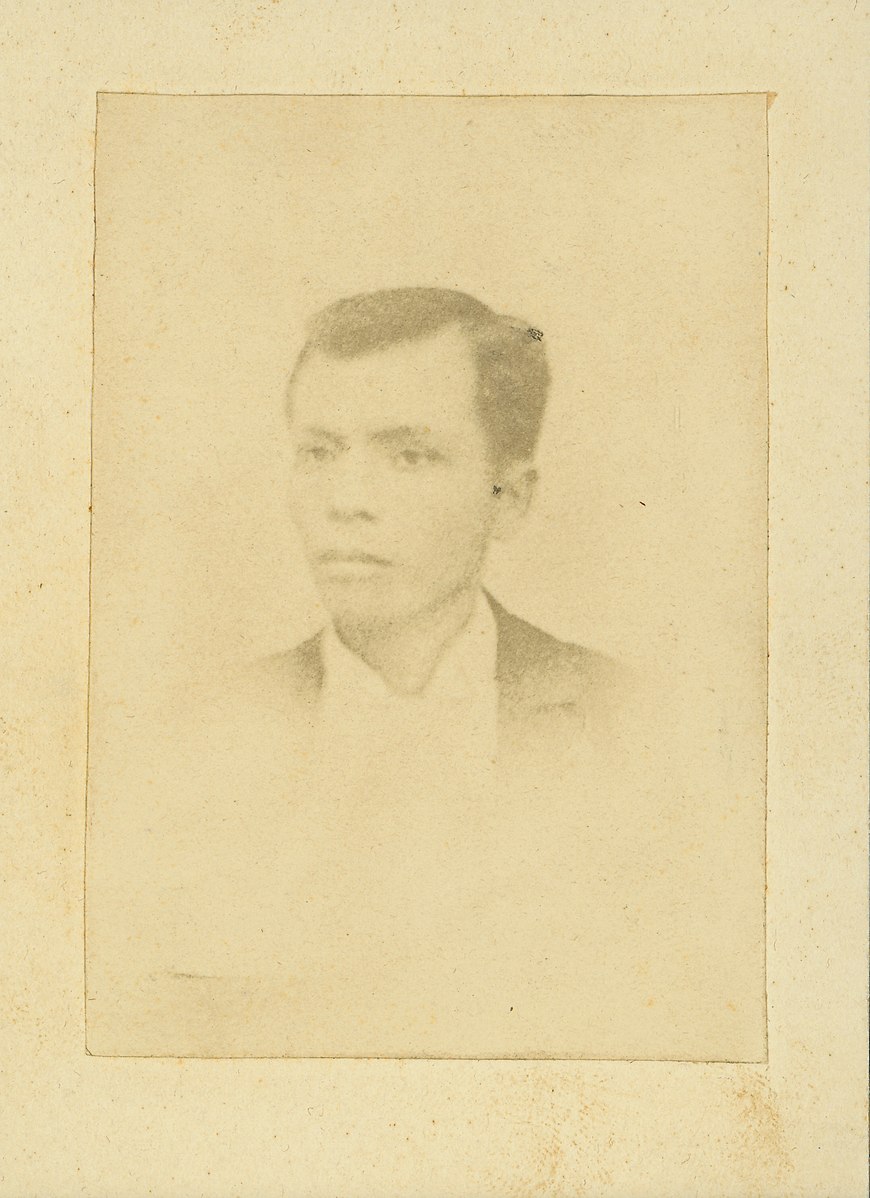Andrés Bonifacio and the house at 72 Calle Azcárraga
July 7, 1892.
The monsoon could not have arrived at a more auspicious time. The rains provided a unique camouflage to this otherwise ordinary night, if I were to imagine the whole scene again. It forced residents to stay indoors, lending an inconspicuousness to the whole affair of staging a meeting of minds.
In the late last legs of the 19th century, this vast stretch of hard mud road named Calle Azcárraga in Manila boasted of mostly huge, two-story houses. At first glance, most everything seemed calm, laidback. Unconcerned but for the daily chores with which residents were busy at the time.
Bonifacio’s ideology was simple, one largely based on the French Revolution which he had read as a young man: to be free from the colonial grip of a once powerful yet impulsive king who ruled nearly 12,000 kilometers away.
One of the houses, marked #72, was home to Deodato Arellano, a clerk in the Maestranza de Artilleria in Manila.
Inside with Arellano sat five men: Ladislao Diwa, a Caviteño and Escribano del Juzgado (clerk of court); Teodoro Plata, another clerk of court, but this time from Mindoro; José M. Dizon, an engraver from Manila; Valentin Diaz, an Oficial de Mesa del Juzgado de Binondo (or court table officer); and 29-year-old Andrés Bonifacio, a warehouse clerk from Tondo.
All six men had jobs, quite the rare show of leniency in colonial Manila. While owning such a huge house may require some wherewithal for the average indio, as some colonial officials did treat the natives kindly and with a semblance of justice, still the general atmosphere was brutal and largely intolerant of indios.

A man passes by a mural of national hero and revolutionary, Andres Bonifacio seen along Pinaglabanan in San Juan City on Nov. 27. The mural is done by the artist collective group 'Gerilya.’ (KJ Rosales / The Philippine STAR)
Patriarchy was widespread, to say little of gender inequality, feudal mindset, religious bigotry and injustice, sexual abuse of women, payment of tribute to the Spanish king, expansive militarization, poverty, and state-sanctioned aggression.
Education brought little benefit to the indios for one simple reason: its limited scope prevented the natives from learning anything of value regarding their freedoms.
While “slavery” was banned on paper, whatever law there was to this effect did little to stop the colonial bureaucracy from putting into service poorer indios under forced labor which oftentimes led to starvation.
Poorly clad, even more poorly armed against the forces of a superpower, they insisted that freedom was theirs for the taking.
It was slavery of the worst kind, with men 16 years old to 60 years old being forced to build roads, buildings, bridges with very little or no compensation. The clerics enforced the same on indios for the building of churches.
Priests also hired women as keepers of the house, whom clerics, for the most part, end up violating sexually. Taxation and the paying of tribute to the Spanish monarchy placed the added burden of a continuing poverty on most of the natives. The Polo Y Servicio system made it so.
A paper by James F. Warren, “Typhoons and Drought: Food Shortages and Famine in the Philippines Since the 17th Century,” it said, “The Spanish crown asserted its right to tribute, and the right of the colonists to maximize profits. The collection of tribute payments through the encomienda, the exploitation of labor under the polos system, and the compulsory sale and requisitioning of local products like rice, under quotas set by the vandala, placed enormous strains on the traditional subsistence economies of the pacified barangays.”
Under colonial rule, poverty and hunger had been turned into implements of war. It kept largely disenfranchised and famished communities from taking up arms.
Be that as it may, these six young men had one mission: to overthrow the Spanish colonial forces via armed revolution. It was quite a tall order for something so underfunded and undermanned. On that day, Deodato Arellano sat as the first Supremo of the secret revolutionary society called Kataastaasan Kagalanggalangang Katipunan ng mga Anak ng Bayan (Katipunan).
Román Basa soon after took the reins of leadership until 1895 when Andrés Bonifacio was hailed as Supremo. Bonifacio was only 32 years old.
Bonifacio was a warehouse clerk—self-educated, headstrong, and from what I’ve gathered in the reading of history, a self-taught bookworm. Not the least of his readings were José Rizal’s Noli Me Tangere and El Filibusterismo, novels whose mere possession turned the owner into a subversive.
Bonifacio’s ideology was simple, one largely based on the French Revolution which he had read as a young man: to be free from the colonial grip of a once powerful yet impulsive king who ruled nearly 12,000 kilometers away.
Four years later, in 1896, under Bonifacio’s leadership, the group had reached a fifty-thousand-strong membership (some say 100,000). On Aug. 19, Spanish colonial authorities discovered the existence of the revolutionary organization.
While Bonifacio’s life undoubtedly told of his unrelenting courage, his death proved the existence of a serious character flaw even in the best of us.
On August 23, 1896, the Revolution was launched prematurely. The Katipunan’s first act of resistance was to meet in Caloocan and tear their cedula or community tax certificates, which they commonly acknowledged as the “symbol of their slavery to Spain”.
The stage was set. The men were more than willing and ready. Poorly clad, even more poorly armed against the forces of a superpower, they insisted that freedom was theirs for the taking. Little did Bonifacio know that eight months later, he would be executed by the soldiers of the organization he had created.
At 33, Bonifacio was killed by katipuneros under orders of Emilio Aguinaldo, the leader of the revolution in Cavite. Historian Ambeth Ocampo wrote of the last days of the orphan of Tondo and avid reader of José Rizal:
“The revolution having gone badly in the territory he commanded, he moved to Cavite but failed a crucial leadership test; the odds, and even the mechanism of the test, were stacked against him. When he refused to recognize the ascension of Aguinaldo—the local leader he had personally inducted into the Katipunan and who had become the most successful military commander against the Spanish colonial authorities—to the leadership of the revolution, he was arrested, tried, brutalized and executed, in short order. It may be truly said that revolutions devour, not only their own children, but their fathers, too.”

While Bonifacio’s life undoubtedly told of his unrelenting courage, his death proved the existence of a serious character flaw even in the best of us. That some Filipinos, for one unexplained reason or the other, will kill its own if only for the promise of power. Mt. Buntis, where Bonifacio died, remains pregnant with lessons.
The Philippine Revolution would not have sprouted if Bonifacio had not read the works of José Rizal. Rizal’s books offered him a vantage point to see the bigger picture, not only in part. It was Bonifacio’s polemicist moorings, as well as organization savvy, that brought about the growth of the revolutionary organization.
Bonifacio may have been deemed headstrong and temperamental, even reckless. He may have lost numerous battles with Spain. One thing, though, is certain: the fire which he had sparked that day in July 1892 continues to this very day.
In the lives of numerous Filipinos we see him, the same lives which were extinguished by fellow Filipinos in the fight for freedom and human dignity. And it all began at #72 Calle Azcarraga in Tondo, Manila.


